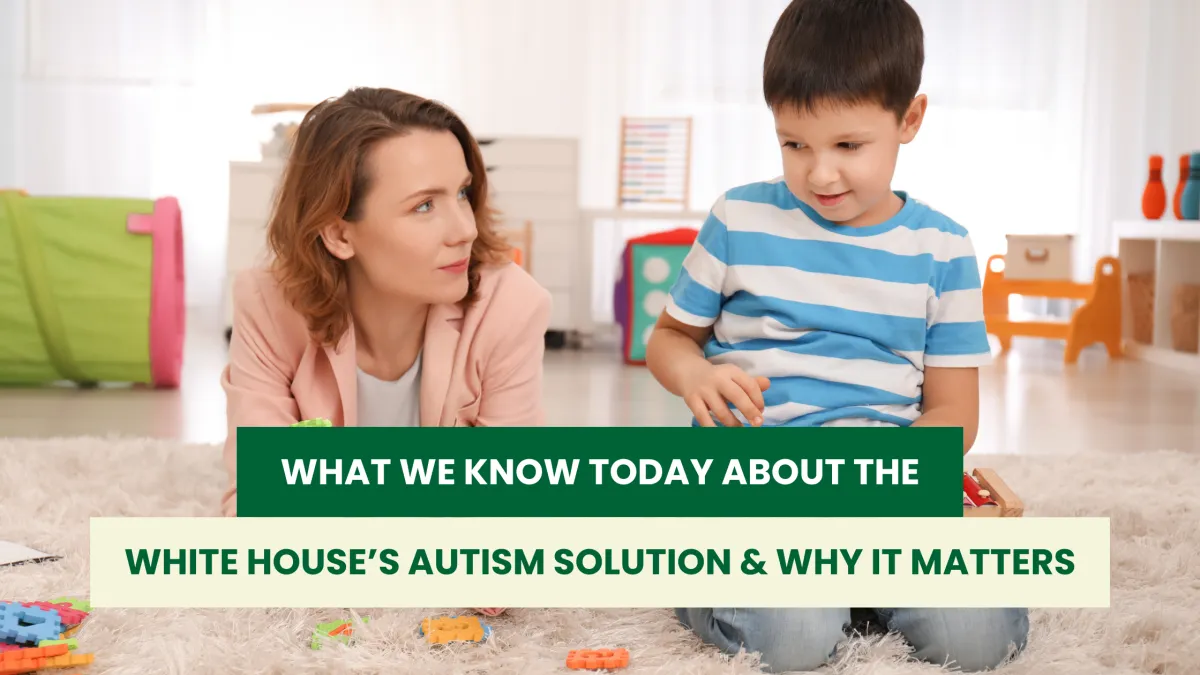
White House Autism Solution: What Parents Need to Know
What Is “Failure to Launch” Syndrome?
Understanding the Context
You may have seen recent headlines about the White House, the Make America Healthy Again (MAHA) Commission, and an upcoming announcement regarding autism solutions. While the full details are still emerging, here’s what’s publicly known, what is not yet confirmed, and what practical, evidence‑based steps parents and caregivers can take now.
Key Facts & What Is Being Proposed
The MAHA Commission (“Make America Healthy Again”) has released a broad strategy and earlier assessment aimed at tackling the childhood chronic disease crisis. Autism is one of several conditions mentioned. The White House+3HHS.gov+3ABC News+3
The strategy includes studying root causes of autism, which may involve integrating large data sets (like electronic health records, insurance claims, sensor or wearable data) to identify environmental, biological, and social factors that correlate with autism risk. ABC News+2HHS.gov+2
Another piece of the MAHA report overlaps with concerns around prescription use, environmental exposures, food quality, and public awareness—areas that might be part of proposed solutions. HHS.gov+2HHS.gov+2
What We Do Know About Autism Rates
According to the Centers for Disease Control and Prevention, about 1 in 31 children aged 8 years in the U.S. are identified with Autism Spectrum Disorder (ASD). CDC+2Autism Speaks+2
Boys are more frequently diagnosed than girls; for example, one report shows ASD is 3.4 times more common in boys than girls. CDC+2CDC+2
What Is Not (Yet) Confirmed
As of right now:
The exact “solution” or plan that the White House will officially announce is not fully known. Speculation includes research, regulatory oversight, potential guidelines about environmental exposures, or medical practices—but nothing is finalized.
Any claims about causation (i.e. what causes autism) remain under research. Many experts caution that rising rates are likely attributable to a mix of factors, including better awareness, changes in diagnostic criteria, and earlier or more thorough screening.
Specific medical treatments or therapies proposed by the government are often subject to rigorous review and must be evidence‑based. Forest Psychological Clinic does not endorse unproven or speculative treatments without scientific backing.
What Parents & Caregivers Can Do Now
Even before policy changes are enacted, there are steps families can take today:
Early screening and assessment. If you notice signs of autism (communication delays, repetitive behaviors, challenges with social interactions), early evaluation is key. Getting a diagnosis early allows for earlier intervention.
Therapy focused on social communication, behavioral skills, and emotional regulation. Evidence‑based therapies (like speech therapy, occupational therapy, social skills training, behavioral therapy) can make a big difference. Therapy that is tailored to a child’s strengths and challenges works best.
Support their overall health & routine. Nutrition, sleep quality, physical activity, and reducing stress can all help with how a child with autism manages daily life.
Stay informed, but critical. When new announcements or “solutions” emerge, check whether they are backed by solid research. Talk to professionals. Ask questions like: has this been tested? Are there peer‑reviewed studies? What do medical associations say?
Access to community & family support. Emotional and social support to families (parent groups, peer mentoring, schools) can be vital. Sharing experiences helps reduce isolation for both kids and parents.
Why This Matters
Knowing what the government is proposing can help families anticipate changes, advocate for necessary supports, and understand what new resources might become available.
Autism is not a one‑size‑fits‑all condition. Solutions will most likely need to be multifaceted—policy, environment, clinical intervention, and social support all play roles.
Forest Psychological Clinic’s mission is to help teens and adolescents (with autism or other developmental challenges) build the tools they need—in school, at home, socially, and into adulthood. Any national initiative should align with that goal: helping each young person maximize their potential.
Closing Thought
We encourage parents, caregivers, and educators to stay grounded in evidence, to look for trusted sources, and to focus on what helps children in tangible, day‑to‑day ways. Whether or not the White House’s autism solution turns out as you expect, effective therapy, early detection, consistency, and support remain the foundation of growth and wellbeing.
If you have questions about autism assessment, therapy options, or how to support your child, teen or adolescent, let us know. The psychologists here at Forest Psychology Clinic are here to help.
